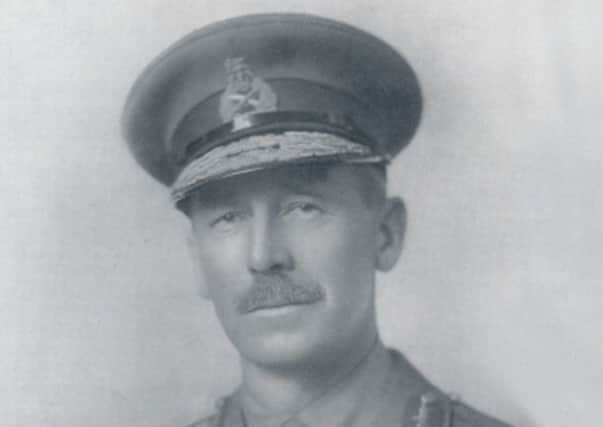History of soldier who served in wars dating back to 1880s traced in cemetery project


Alan and Ann Mosley discovered the remains of a collapsed bench at Berkhamsted’s Rectory Lane Cemetery a couple of months ago.
On the stone backrest they found a small shield with the words ‘Seat of Remembrance’ carved into it. They would like a photo of how the bench used to look.
Advertisement
Hide AdAdvertisement
Hide AdPreviously, the Rectory Lane Cemetery Project was launched to restore the site to pristine condition and trace the history of people buried there.
Spokesman James Moir said: “The restoration of this seat is our first major project, launching a long-term plan to enhance the cemetery as a valued green space in the heart of the town.
“Besides providing an attractive place to pause and reflect it is also an important tribute to a former citizen of Berkhamsted who was an unassuming gentleman with a remarkable military career.”
Research has shown that the seat was originallyplaced there in memory of Richard Mildmay Foot.
Advertisement
Hide AdAdvertisement
Hide AdBorn in 1865, Foot fought in Zululand from 1887 to 1888, then in the South African War 1889 to 1902 and finally in the First World War when he received many awards and was made a Companion of the Bath.
In between conflicts he was a major figure in the Territorial Army, commanding the 4th East Anglian Brigade, Royal Field Artillery.
In South Africa, during an attack at Pieter’s Hill he had been wounded in the head and lay within sight and sound of the Boer trenches.
They called for him to surrender to which his reply, reputedly, was: “No – I’ll die first.”
Advertisement
Hide AdAdvertisement
Hide AdRemarkably, he was at this time a sole parent of two children, his first wife having died shortly after the birth of his daughter in 1894.
But he was rescued, and while still in Cape Town married his second wife, Lucy Anne Cooper, eldest daughter of agricultural chemical manufacturing firm boss Sir Richard Powell Cooper.
On their return, Richard joined William Cooper and Nephews, and as estates manager was responsible for the control of the firm’s large estates in the UK and abroad.
He rose to become vice-chairman of the firm, retiring in October 1931.
Advertisement
Hide AdAdvertisement
Hide AdSadly Foot died two years later in 1933 and his wife Lucy was granted permission to erect a seat in memory of her husband the following year.
Lucy died in 1946 and was buried with her husband in a grave near to the Cooper family memorial.
James Moir said: “Visitors have mentioned playing on the seat as children and it seems a shame that it has fallen into such disrepair.
“It would be a great help if we could see how it looked originally.
Advertisement
Hide AdAdvertisement
Hide Ad“We believe that the seat was teak and the supporting dogs were of Mansfield stone.
“Although much of the work in the Cemetery is being done with skills volunteered, the cost of cleaning and repairing the stonework, replacing the seat and relaying the paving is likely to be around £5,000.”
> If you have any information about or photos of the bench, or if you want to help the cemetery restoration project, email [email protected] or [email protected]